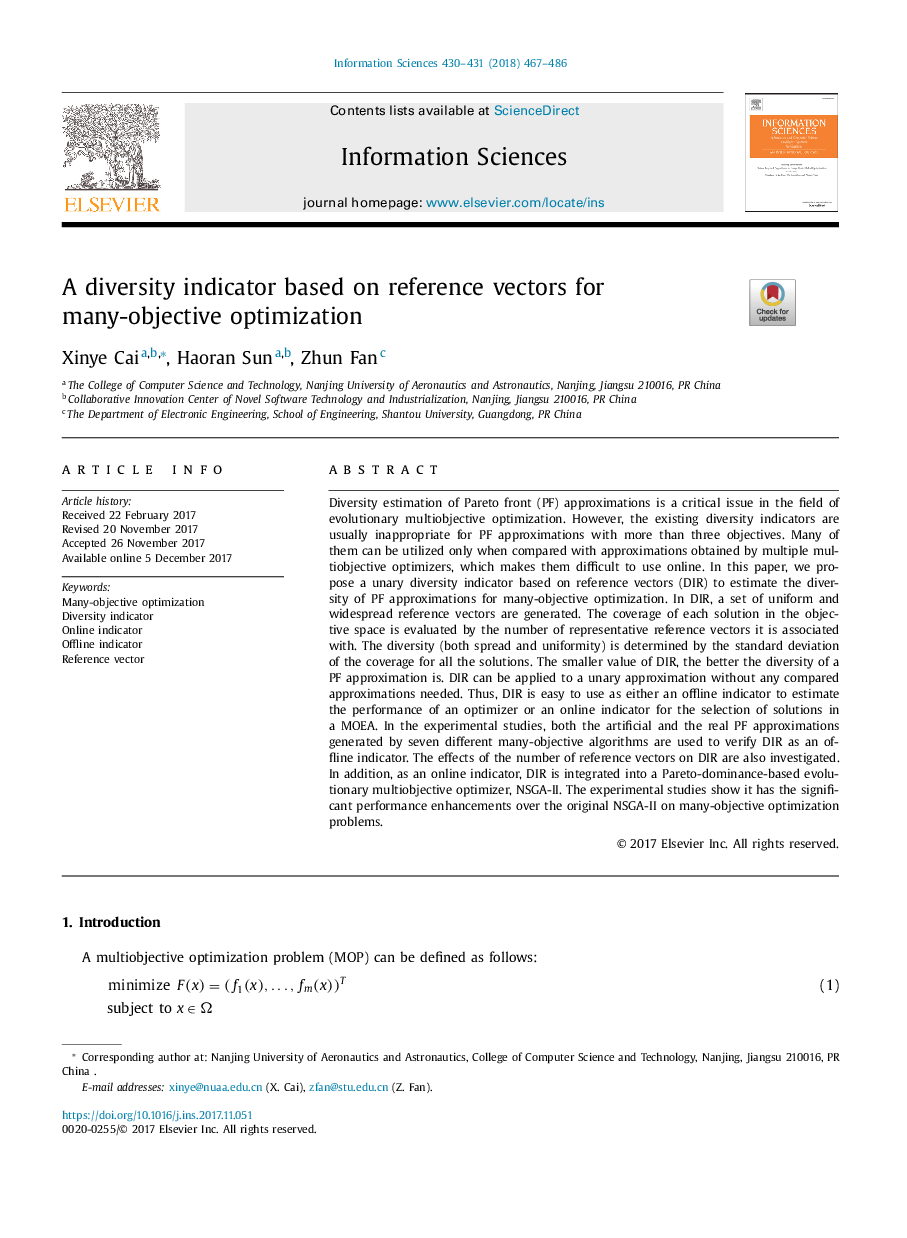| Article ID | Journal | Published Year | Pages | File Type |
|---|---|---|---|---|
| 6856879 | Information Sciences | 2018 | 20 Pages |
Abstract
Diversity estimation of Pareto front (PF) approximations is a critical issue in the field of evolutionary multiobjective optimization. However, the existing diversity indicators are usually inappropriate for PF approximations with more than three objectives. Many of them can be utilized only when compared with approximations obtained by multiple multiobjective optimizers, which makes them difficult to use online. In this paper, we propose a unary diversity indicator based on reference vectors (DIR) to estimate the diversity of PF approximations for many-objective optimization. In DIR, a set of uniform and widespread reference vectors are generated. The coverage of each solution in the objective space is evaluated by the number of representative reference vectors it is associated with. The diversity (both spread and uniformity) is determined by the standard deviation of the coverage for all the solutions. The smaller value of DIR, the better the diversity of a PF approximation is. DIR can be applied to a unary approximation without any compared approximations needed. Thus, DIR is easy to use as either an offline indicator to estimate the performance of an optimizer or an online indicator for the selection of solutions in a MOEA. In the experimental studies, both the artificial and the real PF approximations generated by seven different many-objective algorithms are used to verify DIR as an offline indicator. The effects of the number of reference vectors on DIR are also investigated. In addition, as an online indicator, DIR is integrated into a Pareto-dominance-based evolutionary multiobjective optimizer, NSGA-II. The experimental studies show it has the significant performance enhancements over the original NSGA-II on many-objective optimization problems.
Related Topics
Physical Sciences and Engineering
Computer Science
Artificial Intelligence
Authors
Xinye Cai, Haoran Sun, Zhun Fan,
